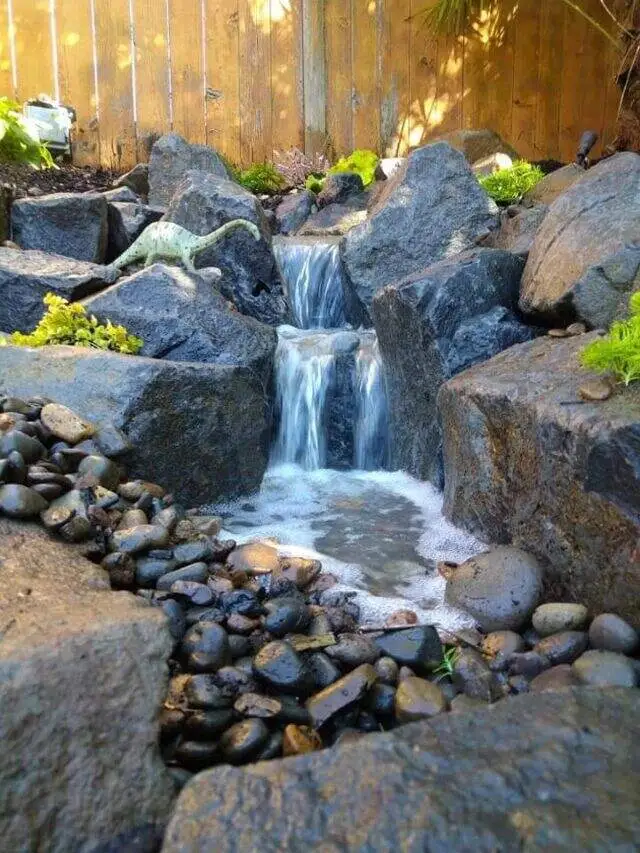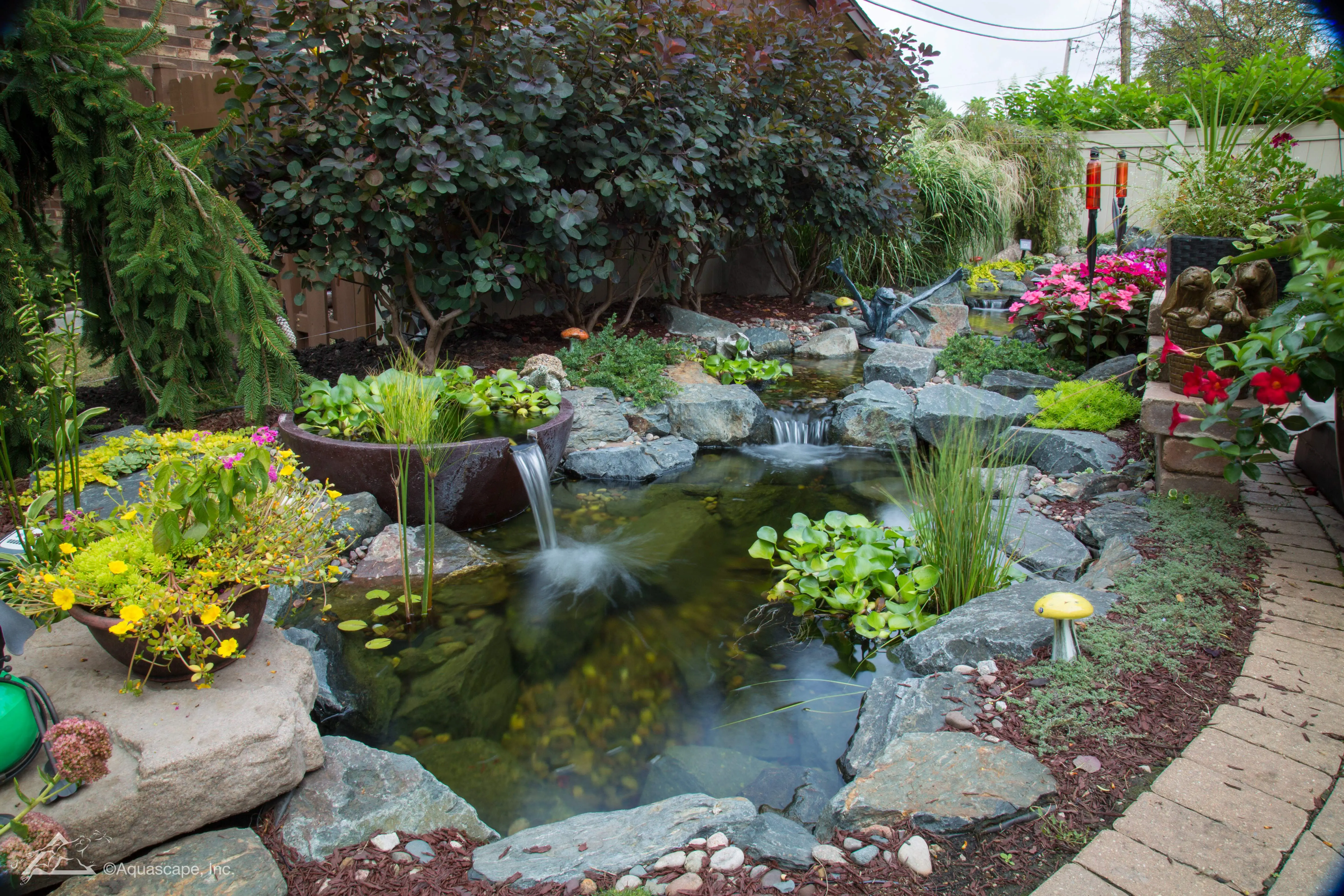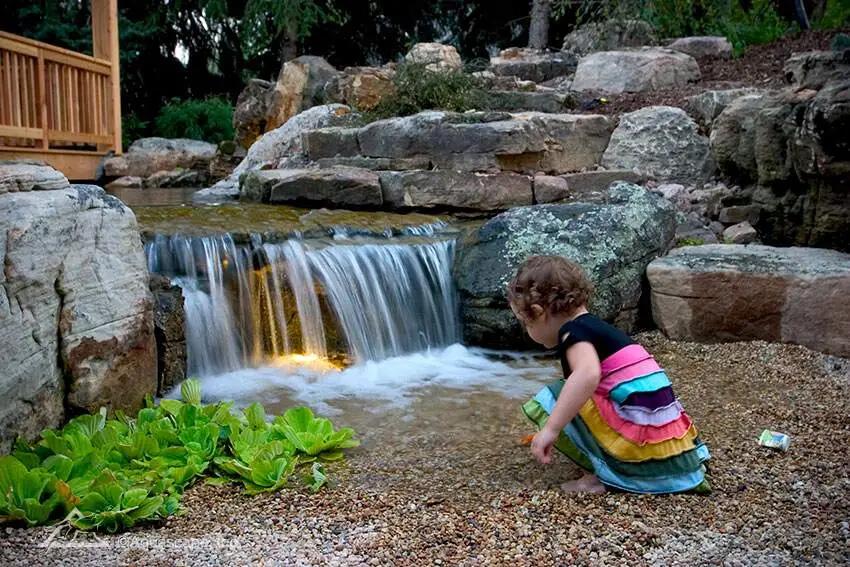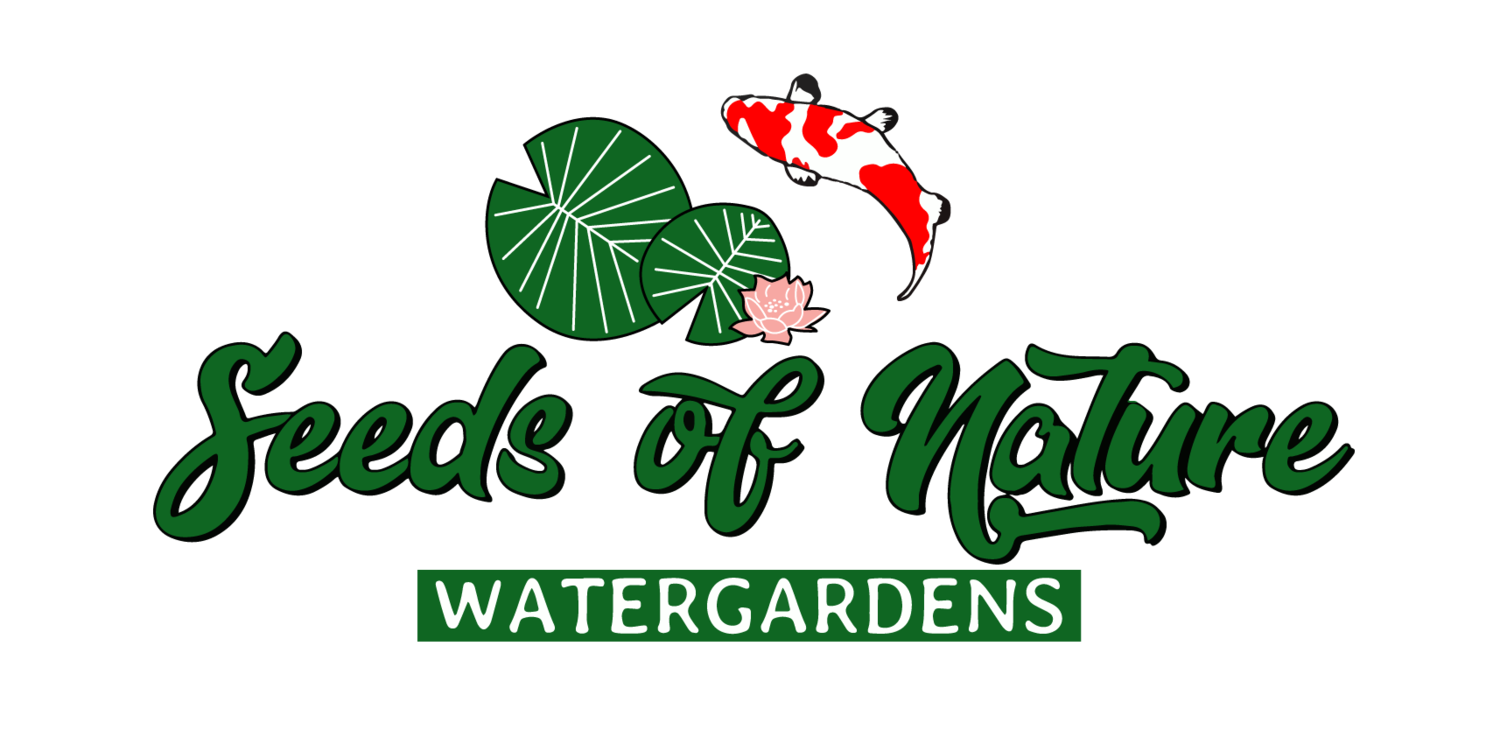HomeFAQS
Business FAQs
What areas do you work?
We provide pond, waterfall, and fountain maintenance, repair, design, and installation services in most of Southern Oregon. Roseburg, Grants Pass, Cave Junction, Medford, Jacksonville, Williams, Rogue River, Central Point, Shady Cove, White City, Phoenix, Talent, and Ashland are all areas we work. We can perform some work on the coast. We do travel projects all around the United States. You can find a certified aquascape contractor in your area here.
What are your hours?
Monday through Friday, 9 a.m. to 5 p.m we are available for phone calls. Our construction hours may differ.
Are you a licensed contractor, and do you have insurance?
Yes, our CCB# is 225553, and we have up to date bonds and insurance.
Do you repair leaking ponds and waterfalls?
Yes, we can help you with your leak. We have a step by step process for dealing with leaks here. If you still can’t figure out your leak, or if you just want us to take care of it then please fill out our contact form, include a few photos of the feature and we will get back to you.
What is your process look like for my project?
We strive for exceptional communication with you and that is why we have an entire page dedicated to Our Process.
Do you repair leaking concrete water features?
Unfortunately, we do not repair leaking concrete features. We can however remove and build something better!
Do you have a storefront open to the public to purchase pond supplies?
No, we do not have a public storefront. We can recommend Wishing Well in Medford for all of your pond supply needs.

Pond FAQs
What size pond should I have in my backyard?
This depends on your goals, expectations, and the size of your yard. One of the only regrets we get from clients is they wish they would have went larger in regards to the pond. You can look through our pond packages here to find the right size for your yard.
What are the different types of ponds I can consider for my backyard?
Generally, there are two main types: the traditional koi pond, and an ecosystem pond. A traditional koi pond has an exposed liner, exposed bead and/or sand filtration, and is generally designed for just koi. An ecosystem pond utilizes rock, gravel, natural waterfalls, and hidden components to create an ecosystem for plants and fish alike. There are hybrid versions as well of both. We build aquascape ecosystem ponds.
What materials are used in an ecosystem pond?
Rocks, gravel, pumps, plumbing, biofalls (waterfall filter/ biological filter), and skimmer (mechanical filtration)
How big of a pond do I need to have koi?
We do not recommend putting koi in a pond smaller than 10′ x 14′ due to their growth potential.
If you want massive koi, then you build a pond as large as possible for your space and budget. This is equally true for water gardening.
What type of maintenance is needed for an ecosystem pond?
Very little. 10 minutes a week is all you should need to empty the skimmer basket, and to feed your fish. During the fall if your pond is underneath trees you may need to empty the skimmer basket daily, or you could tent your pond with a net. Of course if you have aquatic plants you may also need to trim them back, or fertilize them depending on the plant. We offer comprehensive pond maintenance packages for ponds we have constructed as well.
Do I have to run the pump 24/7?
Yes. The biological filter depends upon fresh, oxygenated water running through it continously to keep the bacteria alive and filtering your pond. The colony inside your filter can die if you turn off your pump. If the pump accidentally turns off your biofalls can sustain the colony for a few hours but no longer than a day without colony collapse.
What about predators like heron or raccoons?
Predator pressure is an ongoing struggle for all pond owners. We include fish caves in our pond builds to give your pets refuge from predators as well as the sun. If you have intense pressure we can recommend using aerators for bubble screens, automated sprinklers, or netting.
How deep does a pond need to be?
Fish only need 2′ of depth in order to escape the cold winter months.

Waterfall FAQs
How tall should my waterfall be?
This depends on your goals, expectations, and where the main viewing area for the feature is going to be. We do not want a volcano spewing lava. We generally build falls starting at 18″ tall on flat ground. This might sound small, but it will give you the most natural falls to fit your space. Taller falls are available in most cases. You can check out our pondless waterfall packages to see the dimensions and pricing we have available here.
What is a pondless waterfall?
A pondless waterfall is a waterfall with an underground basin at the bottom of the falls. It appears as if the water is dissapearing into the ground. The basin holds the majority of the water for the falls. We use aquablox as water storage modules along with a pump vault to protect the pump and allow ease of maintenance. You can learn more about pondless waterfalls here.
What type of maintenance does a pondless waterfall need?
Very little, if any. Any debris will accumulate at the bottom of the falls on top of the gravel and can be easily removed by hand. We recommend a yearly cleanout and maintenance check-up to ensure that the pump is working efficiently, and that there are no low edges on the feature.
How much does it cost to the run the pump?
Electrical costs vary by region. You can find your providers kWh price. Most of our pumps run between 300-1000 watts. Typically you can expect to pay anywhere from .50 cents a day to $1.50 a day. Larger pumps consume more power. We use high-efficiency pumps whenever possible to save on power consumption. Pondless waterfalls can also be set on a timer so that they turn off at night or when you are out of town.
Can I still have aquatic plants in my pondless waterfall?
Fully aquatic? No. But you can have pretty much anything except water lillies. If your goal is to have aquatic plants we can build deep pooling areas that can accommodate many types of plants.

